When the management team at Costex Tractor Parts (CTP) was planning its new headquarters in Doral, Florida, the goal was to build a state-of-the-art facility and centralize all operations of the growing business. The company was also interested in tapping into green technology, including solar power.
Now complete, the new CTP office, warehouse and manufacturing center sports 2,974 solar panels on the roof that provide 1.6 megawatts of energy — 90 to 100 percent of the energy needed for the entire building. It took a talented team to design and execute the project, including the general contractor, Link Construction Group, the roofing contractor, Advanced Roofing Inc., and the solar installer, Advanced Green Technologies (AGT).
Advanced Roofing and Advanced Greet Technologies are sister companies, so coordinating the design and installation of the roof and solar system was always top of mind, according to Clint Sockman, executive vice president of Advanced Roofing and AGT.
CEO Rob Kornahrens started Advanced Roofing in 1983. “The vision has always been to control what happens on rooftops,” notes Sockman. “In 1994, we started Advanced Air Systems, which is our mechanical company for heating, ventilation and air conditioning. In 2007, I started Advanced Green Technologies, which is our solar company.”
All three companies are part of the same corporate structure, known as the Advanced Group, headquartered in Fort Lauderdale, Florida. The company has seven offices throughout Florida.
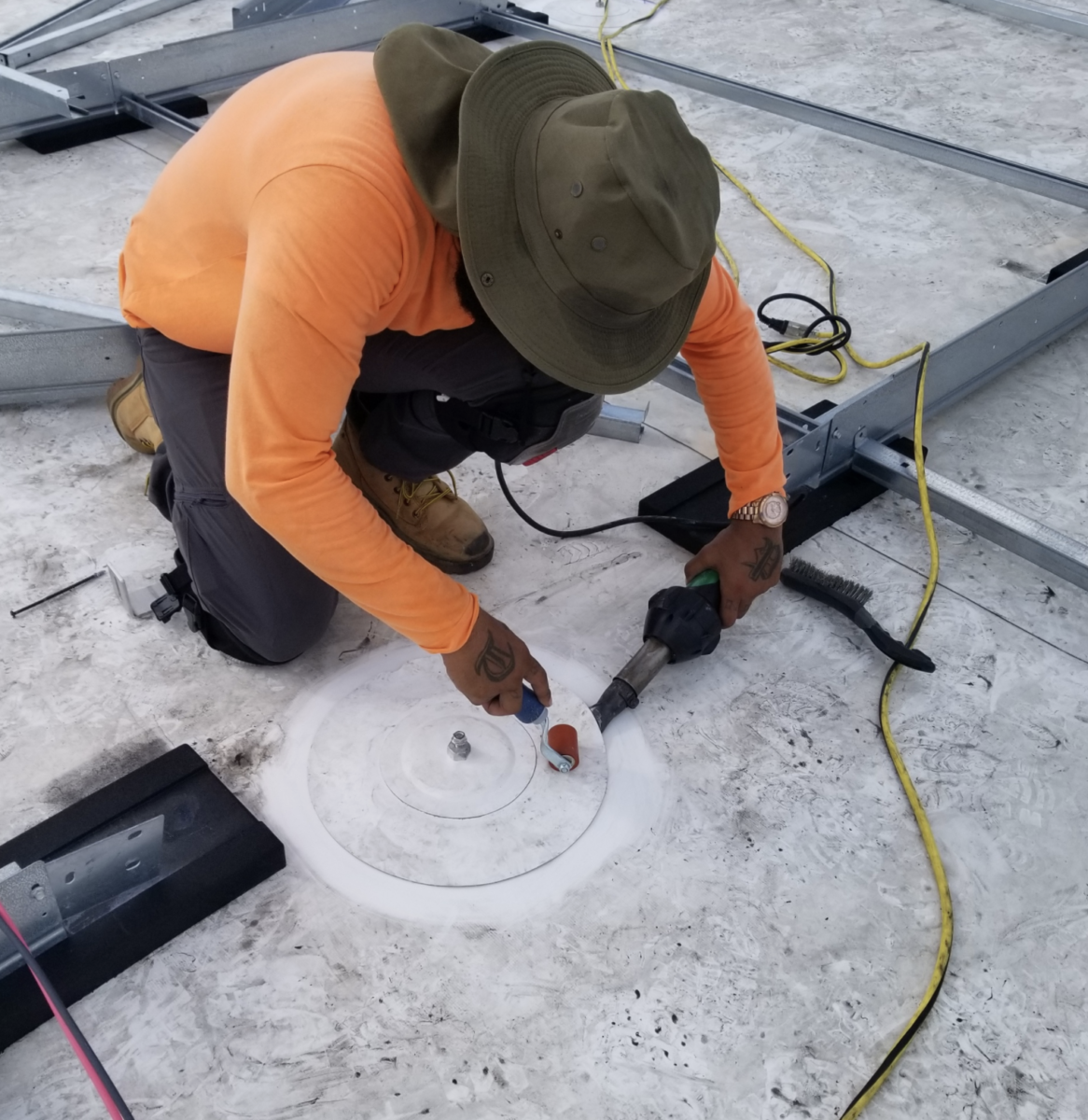
The owners of Costex Tractor Parts were thinking about solar from the start, but it was not reflected in the preliminary plans, so Link Construction brought in Advanced Roofing and AGT to help with the design process. “We were engaged by the general contractor because we are a leader in solar energy in Florida, and we’ve also done a lot of roofing for them,” Sockman says. “The owner was very heavily engaged with the design-build team. We got engaged early, before designs were complete, and we helped wrap up the whole vision. The roof was meant to be in conjunction with the solar. We put a 30-year roof system in place. We wrote the specifications on the safety equipment. We designed the solar layout for maintaining and owning it over the course of 30 years.”
The scope of work covered the roof system and the solar system. “Roofing and solar need to go hand in hand,” Sockman asserts. “There are a lot of synergies there, but there can also be a lot of trouble if you don’t make them come together.”
The Roof System
One key to the roof design was the owner’s goal of long-term ownership of the facility. The Advanced team prioritized a durable, long-lasting roof system that required little maintenance and would work well in conjunction with the solar array.
“We ended up pouring lightweight insulating concrete over the whole deck to create a monolithic insulation structure,” notes Sockman. “Then we came in and put in an 80-mil Carlisle PVC KEE FleeceBack, which an upgraded thermoplastic membrane, which was fully adhered in foam adhesive directly to the lightweight concrete. That gave us a 300 psi substrate to set the solar on, so we didn’t have any worries about compression and wear from the solar. It gave the owner a 30-year warranted roof. And we know PVC performs well in the aggressive salt air.”
The Advanced team walked some other roofs they had installed with the owner and pointed out the benefits of wrapping parapet walls in membrane and installing stainless steel coping caps. The plans also called for approximately 200 standard skylights, but after seeing the benefits of prismatic skylights, they were upgraded to Sunoptics daylighting skylights.
The Solar Array
The design process for a solar array typically begins with determining what the power consumption will be. AGT began by looking at data from the company’s existing facilities. “We tried to translate the usage of their other facilities into what this might mean per square foot at this facility,” Sockman says. “Then we started taking an inventory of all of the conveyors, the lighting, the office structures, the HVAC equipment — how they are going to be operated and what their efficiencies are. We ultimately landed on an energy model of a projected consumption.”
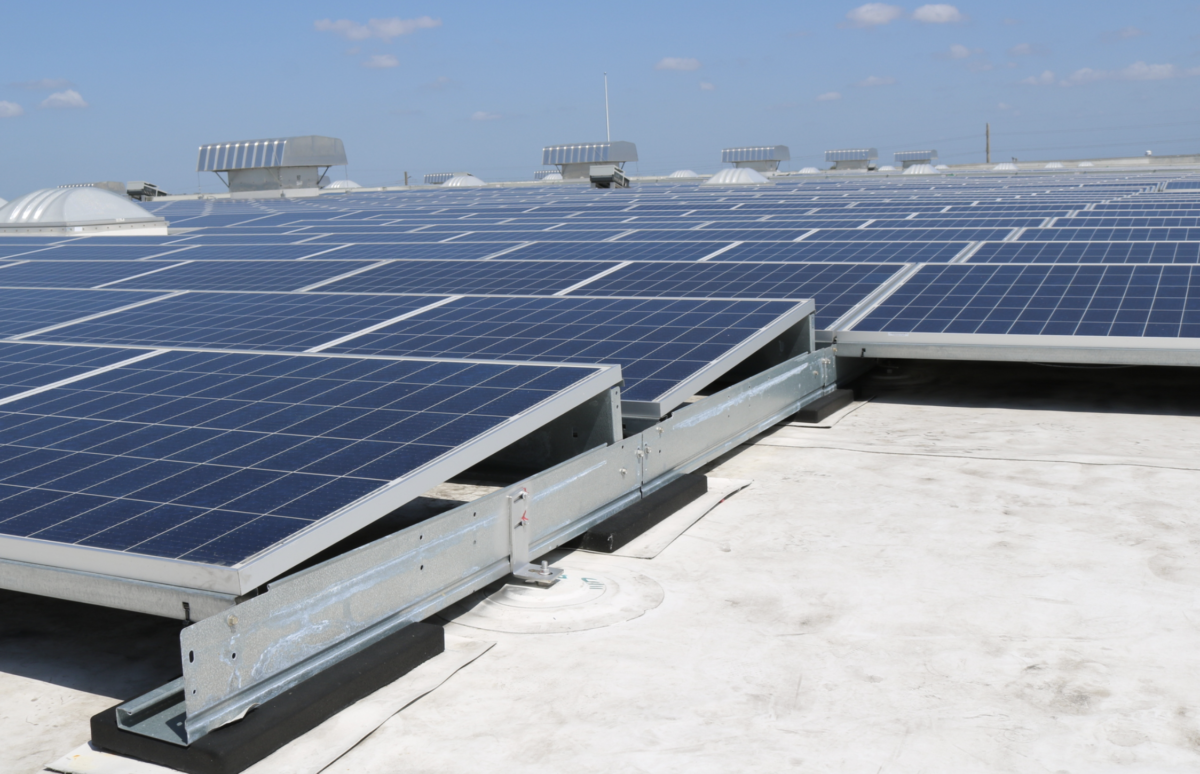
The next steps involved determining the wind speeds and designing the system to withstand them. “We are in Dade County,” Sockman says. “We have 175 mph wind speeds to deal with. We started working with our solar racking manufacturers to understand where the highest pressure zones are going to be and looking at wind tunnel simulations. That helps steer us toward the ultimate, final layout — along with things like fire codes, walkway access, and maintenance, which is always taken into consideration.”
The solar array covers almost the entire warehouse portion of the facility. The front office area, which includes mechanical and HAVC equipment, was not used for the solar array.
The solar modules are manufactured by Canadian Solar, and the continuous rack system used was manufactured by DCE Solar. “It’s a combination of ballasted and mechanically attached racking,” Sockman says. “We run the building through the wind tunnel software that is proprietary to DCE, and we are able to see the pressures on each panel, and we can move our ballast and mechanical attachments around to optimize the design.”
Mechanical attachments used on the project were the Powergrip Plus, manufactured by OMG Roofing Products. “It has a large structural plate that is anchored down through the lightweight into the structural concrete,” notes Sockman. “It has a PVC skirt on it, and we actually weld the flashing right to the roof, so it is seamlessly integrated into the roof.”
Permanent safety equipment was also installed. The building has parapet walls on two sides, while the other two drain to gutters and were completely open. Because maintenance personnel would be on the roof, Advanced designed and fabricated a custom aluminum safety rail system that was anchored directly to the structural deck before the lightweight concrete was poured.
Single-Source Responsibility
The ultimate goal is to make sure the solar system and the roof work well together, and that’s the key to the business model of Advanced Roofing and AGT.
“Single-source responsibility is our message to the customer,” says Sockman. “You get the advantage of never having to worry about people sitting across the table pointing fingers at each other. We are very much coordinated and obviously work together. The other thing that we do is as long as you are engaged in any of our maintenance programs, we extend our contractor’s warranties on both sides indefinitely.”
Sockman points to the project as proof the importance of determining the customer’s vision and executing it flawlessly. “We truly believe the roofer is the most well-equipped to handle rooftop solar,” he says. “We brand ourselves as vertically integrated. We handle the roofing, we handle the solar, we fabricate the carport steel for our carport division. We are big on collaboration in design. We love to collaborate and talk to our owners. We want to understand what the owner’s goals are and have that deeper relationship.”
TEAM
General Contractor: Link Construction Group, Doral, Florida, linkconstructiongroup.net
Roofing Contractor: Advanced Roofing Inc., Fort Lauderdale, Florida, advancedroofing.com
Solar Contractor: Advanced Green Technologies, Fort Lauderdale, Florida, agt.com
MATERIALS
Membrane: 80-mil PVC KEE FleeceBack with 55-mil fleece, Carlisle SynTec, carlislesyntec.com
Solar Modules: Canadian Solar, canadiansolar.com
Solar Racking System: DCE Solar, dcesolar.com

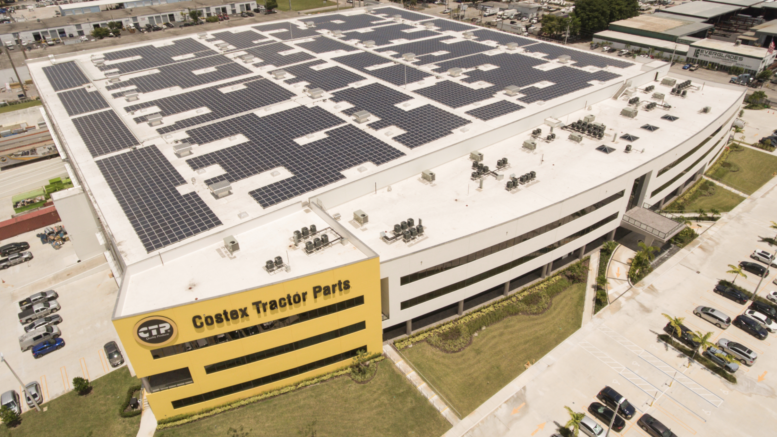

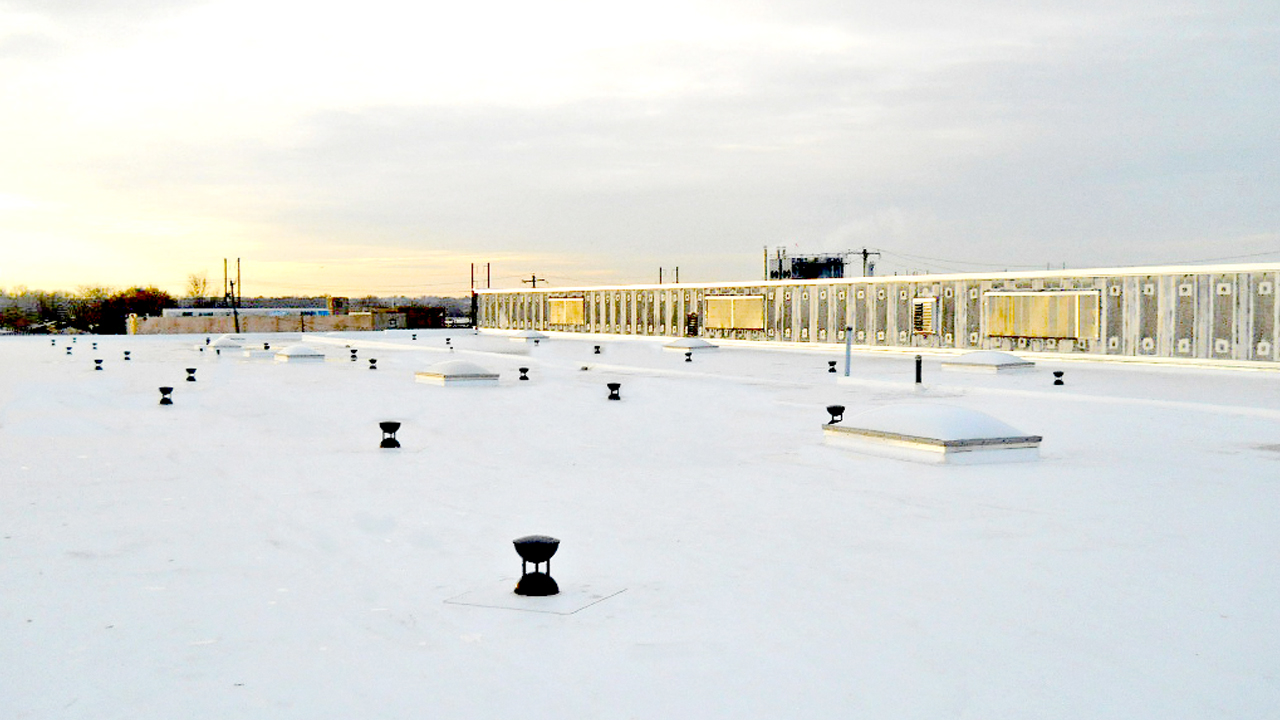
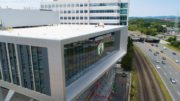
Be the first to comment on "Roofing and Solar Work Hand in Hand at the New CTP Headquarters"